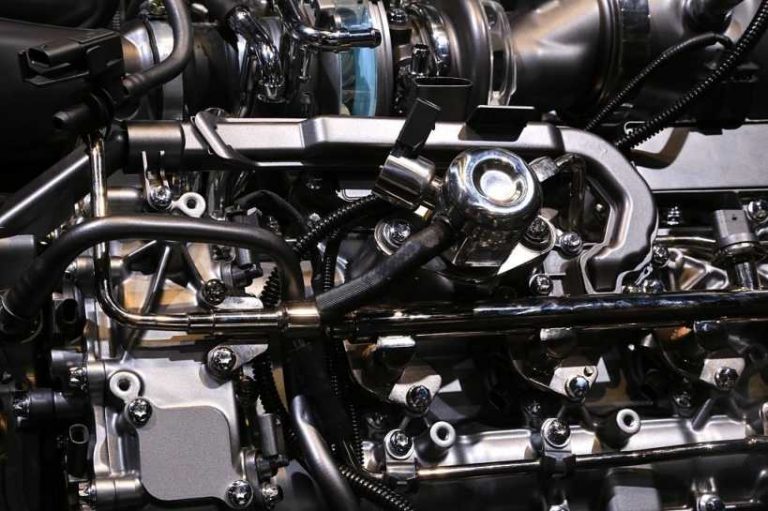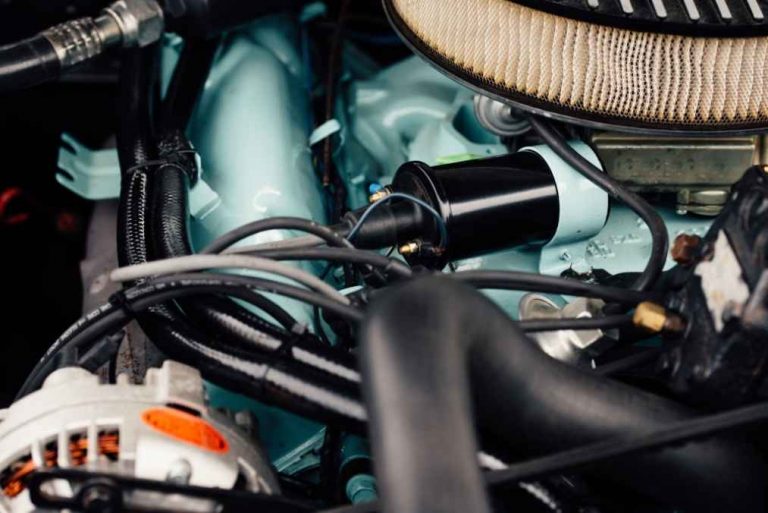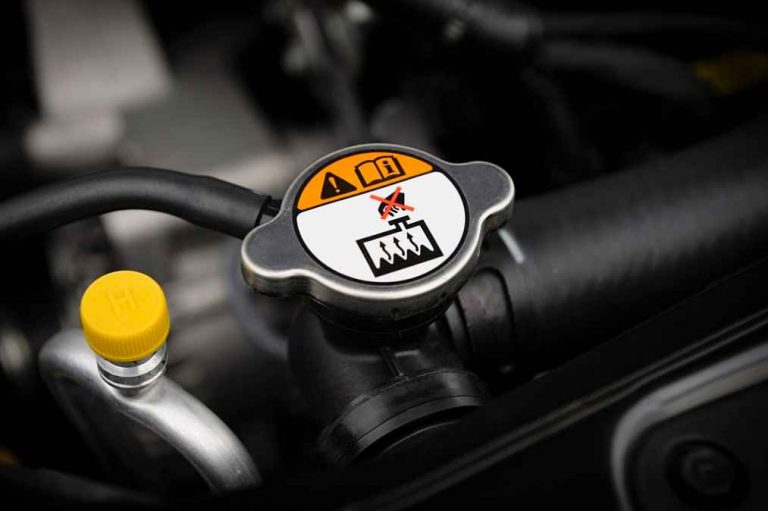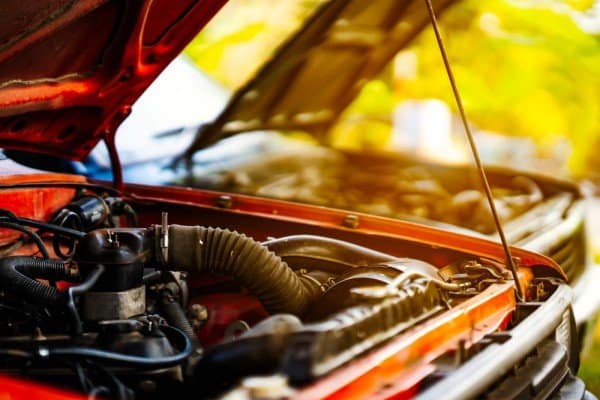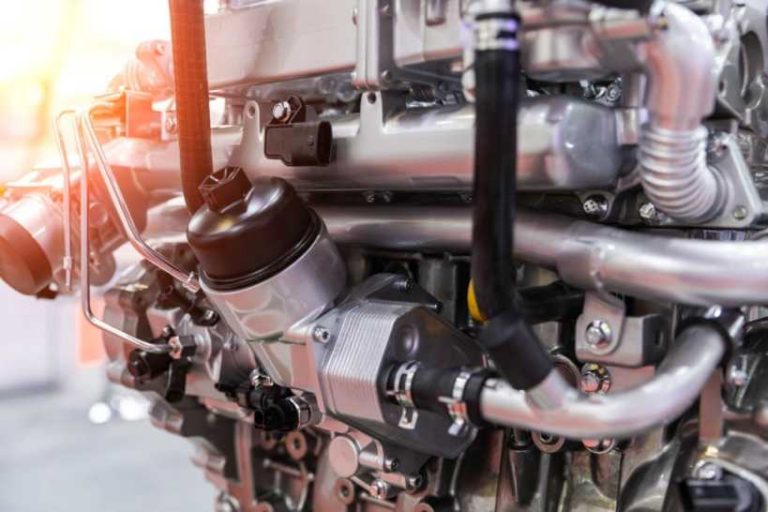Generally, the factory does not produce most of the vehicles with an oil catch can. However, it is a post-buying addition. The producers design it to raise the engine’s capability by decreasing blowby that is otherwise directed back to the intake of the engine. Installing a catch can in your car you will also get lots of advantages.
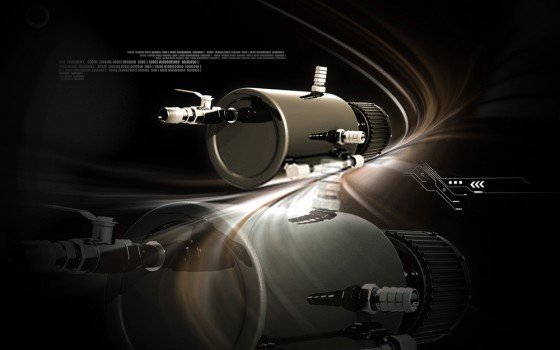
What is An Oil Catch Can?
An oil catch can certainly, is such a device that the users fix it into the cam/crankcase ventilating system on an automobile. So, the users fit an oil catch can to decrease the volume of oil fumes while re-cycled into the intake of the engine.
You can plumb a catch can/container into the car engine in a way, thus it will catch oil vapors. However, these containers may be sometimes large or maybe not. Moreover, a number of them may have breathers on top, while others may be a sealed arrangement. Besides, regardless of that, a good catch can may have some aerator or divider set inside.
However, a catch can is basically a can or container. You can connect it to your engine’s PCV system and intake of your engine. They are generally made from steel, aluminum, or plastic. But, some homemade systems may utilize anything from peanut butter jars to beer bottles.
Above all, an oil catch can capture the surplus oil which goes through the piston seals to the crankcase of the automobile. Generally, the pistons use the oil to lubricate, required for the engine operating at an appropriate rate without any waste. Nonetheless, very often, the procedure generates oily blowby. However, the oil catch can halt the blowby by catching it from going into the engine’s air intake.
Looking for forge product? Good quality catch tanks use a baffle system that helps separate the oil and let it gather at the bottom of the can. But, an inferior quality system may use steel wool to catch the oil. Both systems work, but the baffle system becomes less messy while emptying cans. Steel wool is commonly used for homemade setups, but you may use other things for this purpose.
How A Catch Can Performs
You still, need to realize blowby if you want to know the job of a catch can. A smaller amount of combustion gases bypass the piston rings, while the engine in operation and drive into the crankcase. Generally, these combustion gases mixed with oil vapor in the crankcase move through the PCV system back into the intake. Nonetheless, you may consider this air, fuel, oil combination as blowby. Still, the catch can mount in the middle of the PCV valve and intake.
You may still, fit an oil catch can in the route of the crankcase breather way. So position it in in the middle of the breather outlet and the intake method. The oil drops, un-burnt oil, and water fog freezes and settle in the tank because the crank vapors go through the catch can. Therefore, this halts them from getting intake.
Nevertheless, you will make a much bigger surface area for the fumes to condense by using some kind of media inside, such as an excellent metallic wire. Still, the most excellent type of catch can often have a right metal mess.
Above all, you will need to clean the catch can because, over time, it will block with the surplus oil. However, you can clear this by using a drain plug on the lowest of the can.
Nonetheless, you may collect the surplus oil in the catch can by placing it between the PCV valve and the crankcase. But, you have to periodically empty and rinse the catch can. Although some people make homemade models from rejected food containers or steel wool, there are high-quality salable oil catch cans available in the market.
Profits Of Using A Catch Can?
Still, it stops the blowby from getting into the air intake, retains the machine in a good condition. Also, you should use good air to turn on and run the motor. However, air will no longer be fresh if the blowby cycles through.
Still, the deposits build-up lessens your engine effectiveness. You must remove those deposits because those are carbon. These deposits decrease your engine’s performance, also cause disorderly vibration while idling and unexpectedly ignition failures. Moreover, they also curtail the life of machinery, so you will have to do frequent maintenance.
Essentiality Of A Catch Can?
Indeed, any vehicle can keep on running without an oil catch can. But, you need to require alternative steps to influence the consequences of blowby in your automobile, if you do not fit one.
Should I Use One On My Car?
Still, yes, the short answer. However, all motors have some quantity of blowby, and even if that volume is minor, so, catching oil before it enters the intake is an advantage. There is a tendency to stick to the back of the engine valve by creating a carbon build-up of fuel while entering the intake.
Since no injector fuels spray on the intake valve, carbon build-up is even more common, even with minor volumes of oil arriving the intake. However, carbon build-up looks ugly; it also decreases airflow and overall engine performance.
If enough oil begins to travel through your engine, thus, it could be the first death of your catalytic converter. Is it essential for the stock engine? No, but if you want to go the extra mile or have a directly injected car, you should use it. You should still, mount a catch can for turbo and supercharged vehicles irrespective of modifications. Moreover, Forced induction engines are planned to make additional combustion pressure and so are vulnerable to create more blowby.
How to Make a Homemade PCV Oil Catch Can
Though various commercial oil catch cans are available, some people make home-produced models from old food containers or steel wool . So you may use the following things
- Air compressor filter
- Fuel injection line
- Steel wool pad
- ¼ by ¼ Brass hose barb adapter
- Hose clamp
- Teflon tape
Firstly, you have to do is to take off the filter from the air compressor filter. This taking off will not require because you will have something else that will act as your baffle. During taking off the reservoir set aside to take off the filter from the compressor, keep attention not to lose the ring. You could put it back because it will help you keep the steel wool moving up. Place your steel wool inside the tank. Test enough to fit in comfortably, so that it will act as a baffle. While oil builds up then it will prevent sloshing. Do not force it inside the compressor and then place the ring; it will seal the leakage and keep moisture in. Screw it to tight the compressor.
Now, look at the arrow of the top of the device. Take some Teflon tape to the threads of the bar; thus, this will ensure a proper seal. Make sure you have to go ahead with the barb and connect it with the valve. Then connect it to the valve and tighten it up with the wrench. However, you do not need to be super tight, but tight enough, they are like on the other side. Take your old PCV pipe off and select the position where you will place your catch can. Measure a new pipe comparing with the old one and then cut it to join the device. Then fit this assembled device in such a way and remember following the arrow to the intake manifold.
Frequently Asked Questions
How Often Should I Drain My Oil Catch Can?
It relies upon the driving condition, driving extent, pass up development, and also climate condition, which decides how frequently you should deplete the oil catch can. However, drive 500 miles after fitting a catch can then deplete the oil and quantify the volume of the build-up. This way, you can define easily when to drain the can.
Where should I mount my Oil Catch Can?
You should place an Oil Catch Can wherever there is room in your engine bay. Fit the can as far away from the heat of an engine; therefore you will get the optimal results. Furthermore, you may enhance the yield of a catch can while you push the hot blend through a cooler can.
What are the Oil Catch Can Benefits?
However, The Oil Catch Can is essential for automobiles with direct fuel injection engines as the valve rings don’t impeccably seal between the cylinder and the chamber dividers. Because of this breach, pressure, as well as used oil, outflows into the valve cover area, creating blowby. Blowby enters the PCV line and breather where they are reused, reducing the octane level in the intake manifold. Besides, the blowby consequences in carbon deposits in the intake valve, so the oil catch can help in decreasing this deposit. This decreasing also guarantees the engine’s long life and removal of most contaminants before they blend with the engine oil.
Wrapping Up
However, No engine runs to the best of efficiency with blowby cycling, and also all engines will suffer permanent harm over time. So, you could conclude that all engines could advantage from an oil catch can. Nonetheless, motorists of high-performance automobiles probably have the most to benefit from the setting up of an oil catch can.

